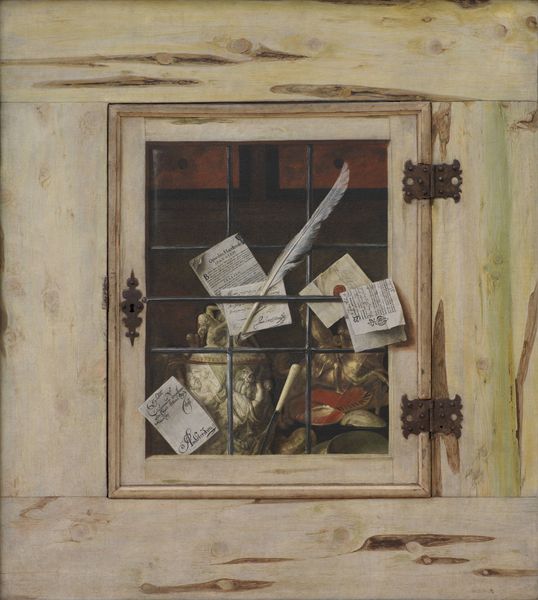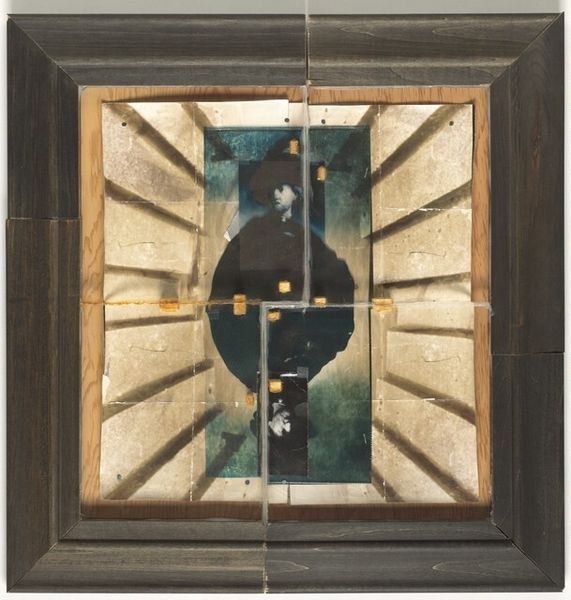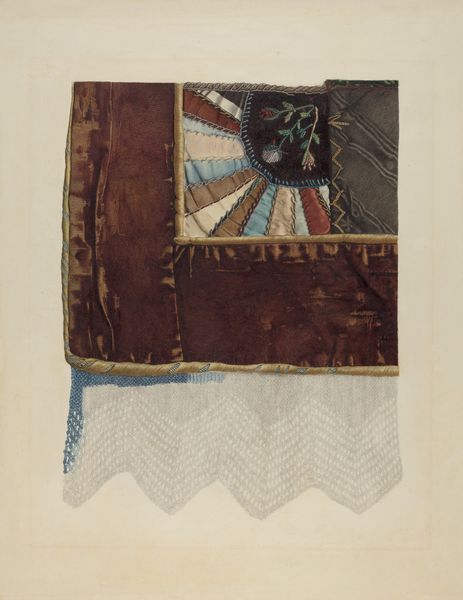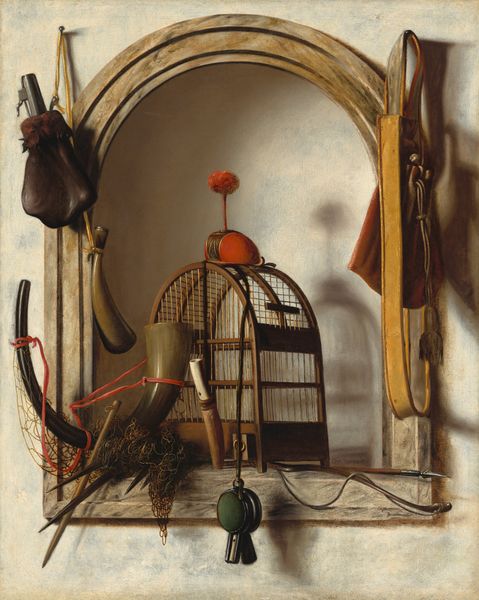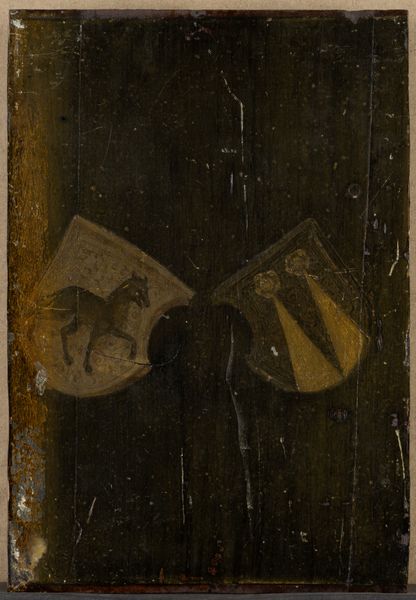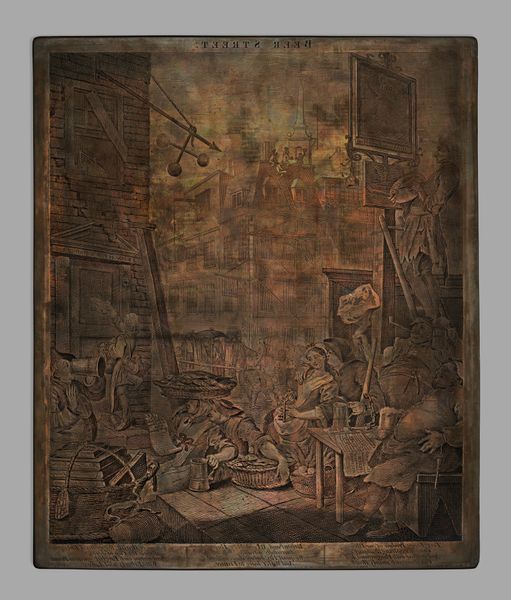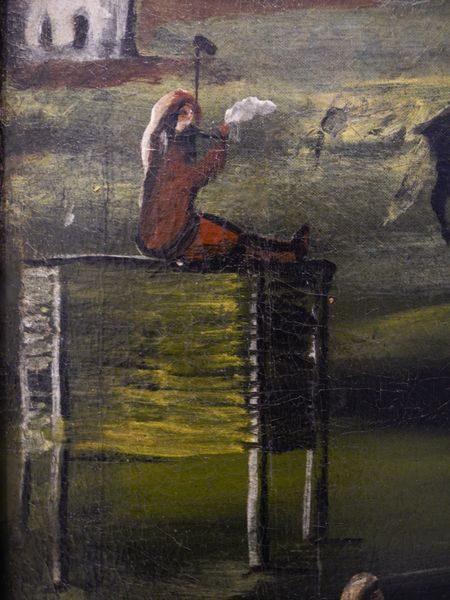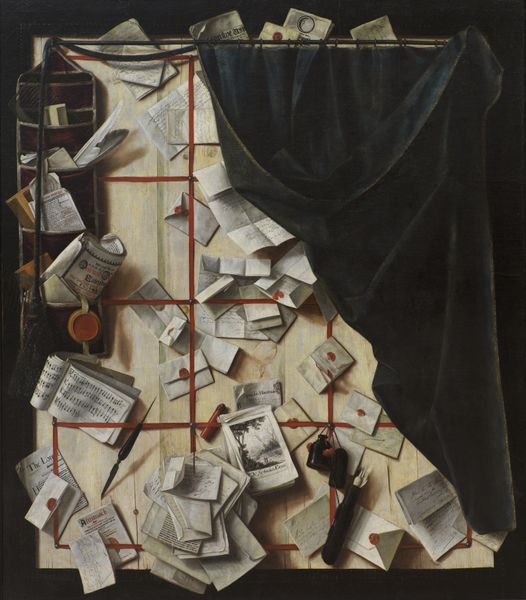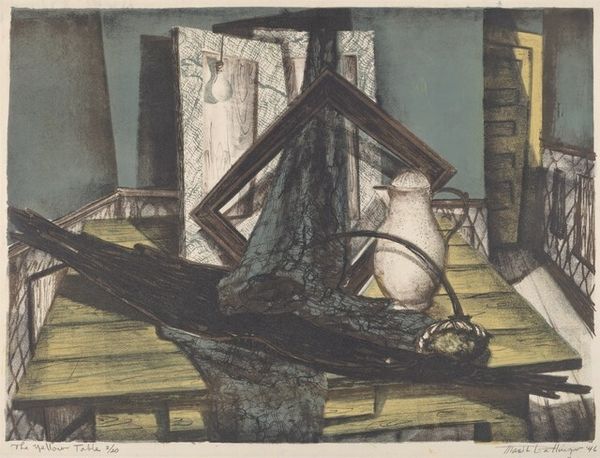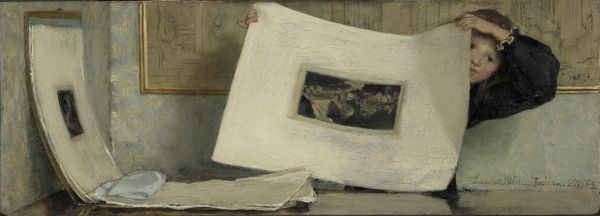
Trompe l'Oeil. An Open Cabinet of Curiosities with a Hercules Group 1670
0:00
0:00
oil-paint
#
baroque
#
oil-paint
#
figuration
#
oil painting
#
genre-painting
#
trompe-l'oeil
Dimensions: 99.5 cm (height) x 89.5 cm (width) (Netto), 102.5 cm (height) x 92.5 cm (width) x 5.4 cm (depth) (Brutto)
Curator: Cornelius Norbertus Gijsbrechts painted this intriguing trompe-l'oeil around 1670. It's titled "An Open Cabinet of Curiosities with a Hercules Group" and uses oil paint to create this illusion of a wooden cabinet. Editor: It's uncanny how the artist simulates depth! The colors are restrained, but it all has this unsettling effect, almost claustrophobic, as if looking into someone else's cluttered inner world. Curator: Exactly! Notice how Gijsbrechts uses the interplay of light and shadow to construct a sense of dimensionality, mimicking the texture of the wooden planks, hinges, even that small sheet of paper precariously perched on the shelf. Editor: That's one heck of a Hercules, there... all gold! This must have been for a very exclusive patron. We could interpret it, though, with reference to trade and social capital? How does Gijsbrecht speak of privilege during this moment in history? Curator: The arrangement of objects in the painting create diagonals. Note the line of the skull fragment mirroring that of Hercules in the top half, visually binding those elements. And yes, there’s a kind of dark humour to it, presenting these grand mythological figures within the modest domestic setting. Editor: Perhaps Gijsbrechts subtly comments on power structures. By including objects linked to exploration and discovery and colonial narratives, the statue transforms into more than simply decoration. Curator: These objects certainly lend to its overall aesthetic complexity. He creates these layers of perception where we are prompted to reconsider reality itself. Editor: Ultimately it is the piece's ability to make us question perception and power that ensures it resonates through generations. Curator: I couldn’t agree more. Gijsbrechts prompts contemplation through masterful simulation, inviting us to confront not just our sight but, perhaps, societal undercurrents.
Comments
No comments
Be the first to comment and join the conversation on the ultimate creative platform.
